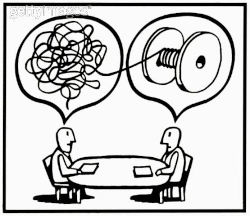Excerpt: Guide for Advocates When the Batterer Is a Law Enforcement Officer
Diane Wetendorf, ©2004 for the Battered Women's Justice Project. Available in PDF

As an advocate for battered women, you are used to supporting women's efforts to survive, escape, and stay safe. The purpose of this Advocate's Guide is to prepare you for the complexities victims face when the batterer is a police officer. Since most advocates do not encounter police officer domestic violence every day, the realities of a victim's experience can take you by surprise. The Guide explores the reasons why familiar remedies are often inadequate against an officer batterer's power and control over the victim and his influence within the criminal justice system. It challenges us to create alternatives and safety plans that do not rely on law enforcement.
The Guide is built around three "top ten" lists that provide essential cues for advocates: 1) Ten Things Advocates Must Know, 2) Ten Things Advocates Should Discuss with the Victim, and 3) When the Victim Is an Officer. They are meant to flag your attention: be aware, be alert, and read further. The lists are meant to be available at the crisis line desk and in the legal advocate's handbook. You will find detailed information about the police culture, the characteristics of police-perpetrated domestic violence, challenges to systems' advocacy and collaboration with law enforcement, and the numerous safety planning considerations to keep in mind when working with victims of police-perpetrated domestic violence.
As advocates work more closely with police, it is easy to understand how victims may think advocates are part of the criminal justice system. The advocate's independence can be compromised — or appear compromised — by the close working relationships that accompany efforts to build inter-agency collaboration. If an advocate even appears to be a part of the criminal justice system, a victim of an abusive officer will not trust her. For example, in some communities the advocate arrives at the scene alongside the police; advocates may share information and strategize with police and prosecutors. Where police departments and prosecutors' offices employ victim support specialists to provide information and services (sometimes to both victims and perpetrators), and call them advocates, victims may be even more confused about who has what role. Imagine how this blurring of roles looks to the victim whose abuser is a police officer.
The power and privilege individual police officers hold within the criminal justice system is a formidable obstacle that has ramifications beyond any one victim. Law enforcement accountability for officer-perpetrated domestic violence is a litmus test of its broader public safety commitment to all women. Confronting police-perpetrated domestic violence is not ancillary to our advocacy work, but at the heart of it. Ignoring it undermines our efforts as agents of change.
Read/Download the Advocate Guide [PDF]
Go to index